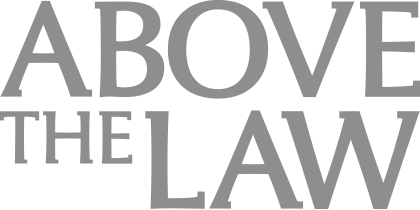Inside Straight: Identifying Dangerous Employees
How do we train employees about corporate policies, legal requirements, compliance issues, and the like? Here are some insights from in-house columnist Mark Herrmann.
An old Arab proverb says that there are four types of men:
“He who knows not and knows not he knows not; he is a fool — shun him.
He who knows not and knows he knows not; he is simple — teach him.

Law Firm Business Development Is More Than Relationship Building
He who knows and knows not he knows; he is asleep — wake him.
And he who knows and knows he knows; . . .
He is wise — follow him.”
Sponsored

Curbing Client And Talent Loss With Productivity Tech

Law Firm Business Development Is More Than Relationship Building

(Sweet Lord, Lat! Have I made progress figuring where to stick in those ellipses to entice readers to click through and read, or what? Give me another two years and I’ll be a pro at this!)
What does that have to do with being an in-house lawyer?
Nothing, but it’s a pretty cool proverb, and I just suckered you into reading the punch line, didn’t I?
Ahh . . . just kidding.
How do we train employees about corporate policies, legal requirements, compliance issues, and the like?
Sponsored

AI Presents Both Opportunities And Risks For Lawyers. Are You Prepared?

Generative AI at Work: Boosting e-Discovery Efficiency for Corporate Legal Teams
One main tool is to inflict upon employees hour-long, web-based training sessions. At the end of the hour, the training course presents ten questions, seven of which you could have answered correctly before you took the course, one of which you can answer as a result of what you learned, and two of which are just ambiguous crappy questions, so you choose randomly between the two possible correct answers.
You guess wrong at one out of the two ambiguous questions, and the computer says that you must try again until you answer all ten questions correctly. So you look at the one you got wrong, write down that the correct answer is “C,” and go back through the test to get your perfect score and be done with the damned thing.
After the period for taking the test has expired, your training department proudly reports that 97.2 percent of employees took the course, so basically everyone now knows the material.
That overlooks, of course, that no one may actually have learned the material — because of the problems built into web-based training of this type — and you’ve done nothing to identify people who truly understand the material from people who don’t have a clue but are nonetheless able to score the requisite perfect ten on the test.
What’s a corporation to do?
Some outfits that specialize in training — and some smart law firms working in conjunction with them — have changed the questions posed at the end of these on-line courses. Instead of asking folks to give only substantive responses, the new-fangled tests also ask respondents how confident they are of each substantive answer they’ve given. Thus, for the seven questions that any third grader could answer, a respondent would check “100% certain” and then answer correctly. For the trickier question, the respondent might check “75% certain,” and then check a box. For the two ambiguous questions, the respondent might check “40% certain” and then make an educated guess.
Why is this better than traditional testing?
First, it will help you identify bad questions. If nearly all employees are uncertain about the answer to question number 8, then it’s likely that question 8 is poorly written. You can use that feedback to improve the test the next year.
But that’s not the main benefit of asking about confidence levels in addition to substantive material. The main benefit is what these questions tell you about your workforce.
These new-fangled tests will reveal that perhaps 20 percent of your corporate employees know the right answers to the questions, and they also know (with something approaching 100 percent certainty) that they know the right answers. Those employees are good — treasure them.
Another 50 percent of employees will score in the middle — getting some answers right and some wrong, and expressing their uncertainty. Those employees are ordinary — train them. (It should be relatively easy to convince those people to call Law or Compliance if they’re feeling uncertain. That’s a perfectly good result.)
But 30 percent of your employees will be 100 percent sure that they know the answers to questions — and they’ll be wrong. Those people will, with 100 percent confidence, check the wrong answers to the substantive questions. Those employees are dangerous — shoot them.
Ahh . . . just kidding.
Fire them.
Ahh . . . just kidding again (sort of).
Those are the employees who need serious training, to teach them either (1) what they need to know or, at a minimum, (2) to feel some uncertainty, which might encourage those employees to seek help, rather than to boldly go where no employee should be going.
If a web-based tool can help corporations distinguish the wise from the sleeping from the simple from the fools, then compliance departments (and others) will have taken a giant step forward. That’s what you get when you cross ancient Arab proverbs with modern technology.
Mark Herrmann is the Chief Counsel – Litigation and Global Chief Compliance Officer at Aon, the world’s leading provider of risk management services, insurance and reinsurance brokerage, and human capital and management consulting. He is the author of The Curmudgeon’s Guide to Practicing Law and Inside Straight: Advice About Lawyering, In-House And Out, That Only The Internet Could Provide (affiliate links). You can reach him by email at [email protected].







